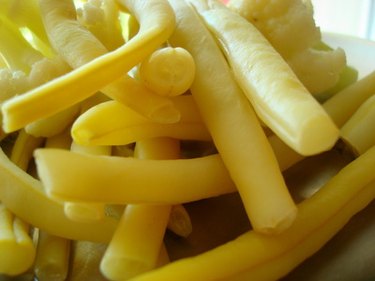
Bean plants have been cultivated for more than 7,000 years, and were a dietary staple among Native Indian tribes. Today they are a popular crop in the home vegetable garden. They grow easily in mildly warm climates and are versatile: eat them fresh, dried, frozen or canned.
History
Video of the Day
Common beans, including green beans, navy, lima and kidney beans, originated in South America, probably Guatemala, according to Texas A&M University. Native Americans brought them to North America and Christopher Columbus later introduced them to Europe. They were a favored food of explorers because they stored well when dried and were high in nutrition.
Video of the Day
Types
Green beans are eaten fresh with the pod and come in two varieties--pole beans and bush beans. Shelled beans are generally dried and used in soups and stews, although soybeans are also used fresh or ground into powder. Both green beans and shelled types come in hundreds of colors. A small, round lima bean found in the Caribbean produces toxic amounts of cyanide, according to Texas A&M University.
Nutrition
Beans are powerhouses of nutrition. For just 20 cents per 1/2 cup serving, they provide 6 to 7 grams of protein. One serving has 100 to 120 calories and 25 to 30 percent of the USDA Daily Value of fiber, according to the Idaho Bean Commission. They also are high in B vitamins, iron and calcium.